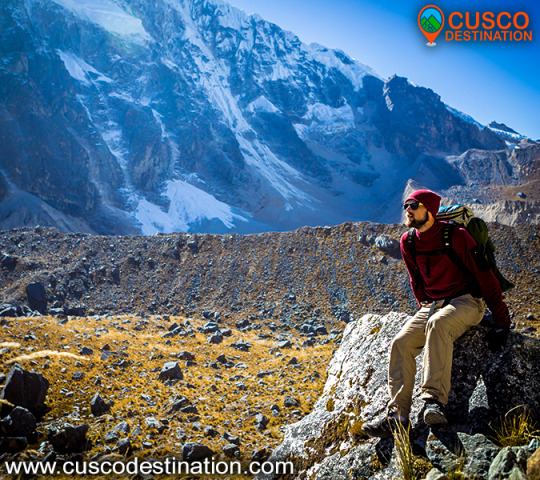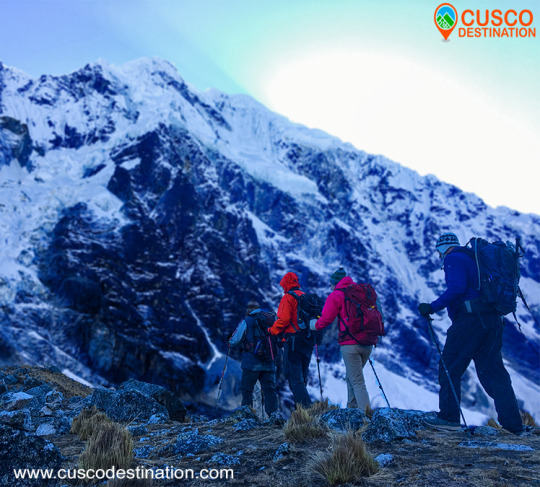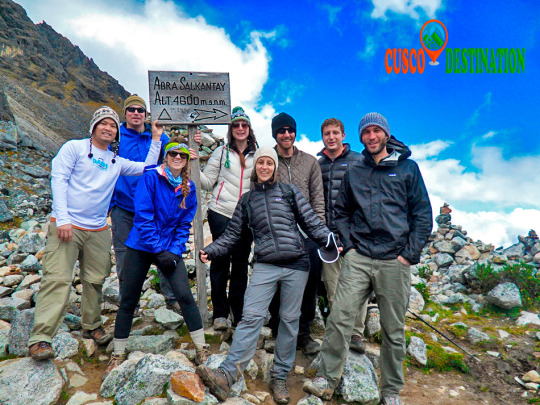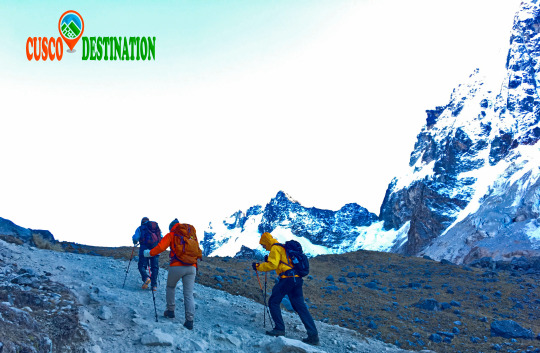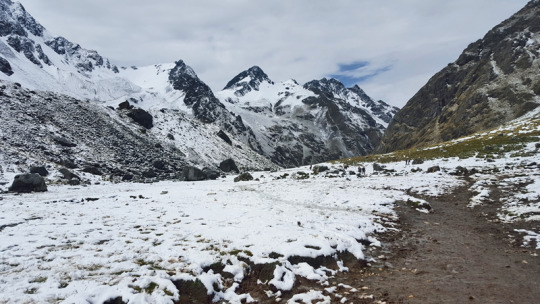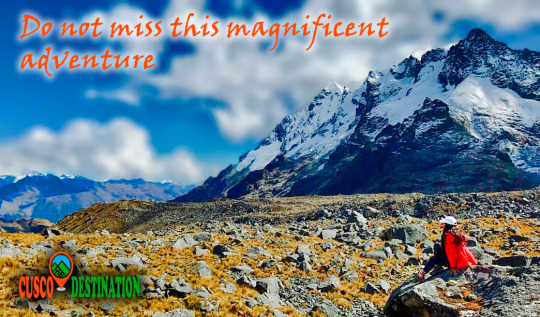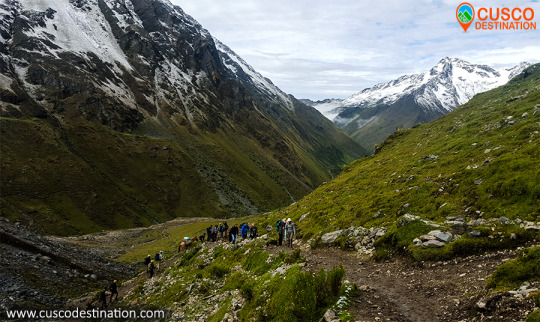
What does Salkantay mean?
The Salkantay is a snowy mountain whose name translated from Quechua would mean ‘Wild Mountain’. This summit is known as ‘Apu’ (‘Lord’) for its majesty and elevation.
Where is it located?
The pu Apu ’Salkantay is located in the Vilcanota Mountain Range in the Andes of southern Peru. This snow-capped mountain is the second largest in Cusco, after Ausangate (Mountain of the 7 Colors).
How high is the snowy Salkantay?
The snowy Salkantay reaches 6,271 meters above sea level (m.s.n.m.). The trek route that leads to Machu Picchu has its highest point in the ‘Abra Salcantay’, at 4,650 m.a.s.l. From there you can see the peak of the snowy peak.
How's the weather?
The snowy in itself presents an extremely cold climate (several degrees Celsius below 0º).
The climate during the Salkantay trek, on the other hand, is varied. The intense sun and the nightly cold in the early days are changed by the tropical environment in the latter.
What is the flora and fauna like?
The 5 days and 4 nights of the Salkantay trek cover landscapes with a great variety of flora and fauna. Among the species of flowers and plants, the orchid and the ichu (Andean grass) stand out. Among the species of birds and animals, it is worth mentioning the llama, alpaca, vizcacha, condor, spectacled bear and the cock of the rock (national bird of Peru)
Salkantay trek: everything you need to know
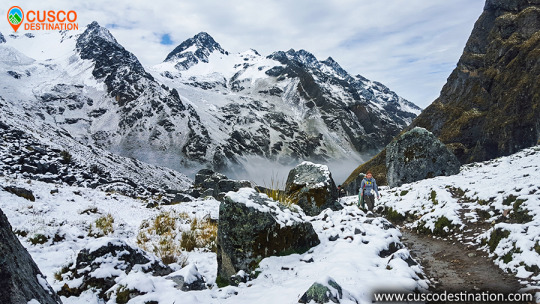
What is the Salkantay trek?
The Salkantay trek is a hiking route that takes the visitor to the Inca City of Machu Picchu. The total walking distance is approximately 70 kilometers (5 days of route).
The Salkantay trek is considered among the 25 best excursions in the world by National Geographic Adventure Travel Magazine.
Classic Salkantay trek 5 days is considered by most to be the best alternative route, This walk allows you to enjoy the options that there is in the salkantay route, you will go up to humantay lake, you will pass for the highets point of the salkantay route to be to see salkantay mountain up close, you hike through the santa teresa valley that is full of vegetation is the begining of the peruvian amazon, you have the chance to see, plantations of coffe, coca, avocados, bananas and much more, this valley is full of fresh wáter with many waterfalls and also if your choisce this hike, you will have enouth time do the relaxing hot springs of colcalmayo in santa teresa. and also you can do Llactapata hike on 4th day of the our advedventure, if you are an adventures person you got the chance to do the biggest and longest zipline of southamerica. choose this one and get a perfect adventures vacation to Machu Picchu.
Useful Information
- Starting Altitude - 3350 meters / 10990 feet .
- Highest Altitude - 4600 meters / 15091 ft
- Walking Distance - 12km / 7.45 miles
- Campsite Elevation - 3920 meters / 12861 ft
- Meals - 4 breakfast, 4 lunch, 4 dinner, 3 tea times, 3 wake up tea
- Overall Difficulty - Moderate - Changing
- STARTING POINT: - Cusco at your hotel
IMPORTANT INFORMATION:
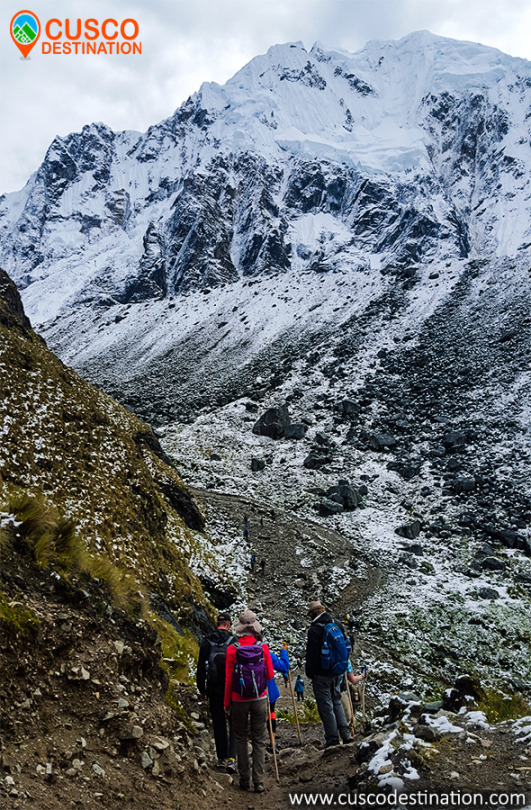
The snow-capped Salkantay is one of the highest mountains in Cusco, along with the Ausangate mountain in the Vilcanota mountain range which is located further south.
The Salkantay Trek to Machu Picchu is listed as one of the 25 best treks in the world by National Geographic Adventure Travel Magazine.
The Salkantay Trek is definitely one of the very best trekking adventures that you will find in Cusco and in Peru. After the Inca Trail classic or Inca Trail short, the Salkantay route is the 2nd most popular to Machu Picchu (and a lot less crowded).
Machu Picchu is one of the 7 Wonders of the Modern World, Heritage of Humanity, Historical Sanctuary of Peru and probably the most important archaeological site in Latin America.
Machu Picchu is majestic architecture comprises 140 structures throughout the citadel.
Machu Picchu is was built by the Inca Pachacutec around the year 1460
After being forgotten, it was only in 1911 that the American Hiram Bingham reached Machu Picchu on an expedition and spread the site worldwide.
Brief Itinerary
- DAY 1: Cusco – Mollepata – Humantay Lake – Soraypampa
- DAY 2: Soraypampa – Salkantay Pass- Huayracmachay - Chaullay
- DAY 3: Chaullay - La Playa - Santa Teresa (2nd option camp in Lucmabamba)
- DAY 4: Santa Teresa – Hidroelectrica – Aguas Calientes (Llactapata - Aguas Calientes)
- DAY 5: MACHU PICCHU - CUSCO
MORE TOURS IN CUSCO TO MACHU PICCHU






